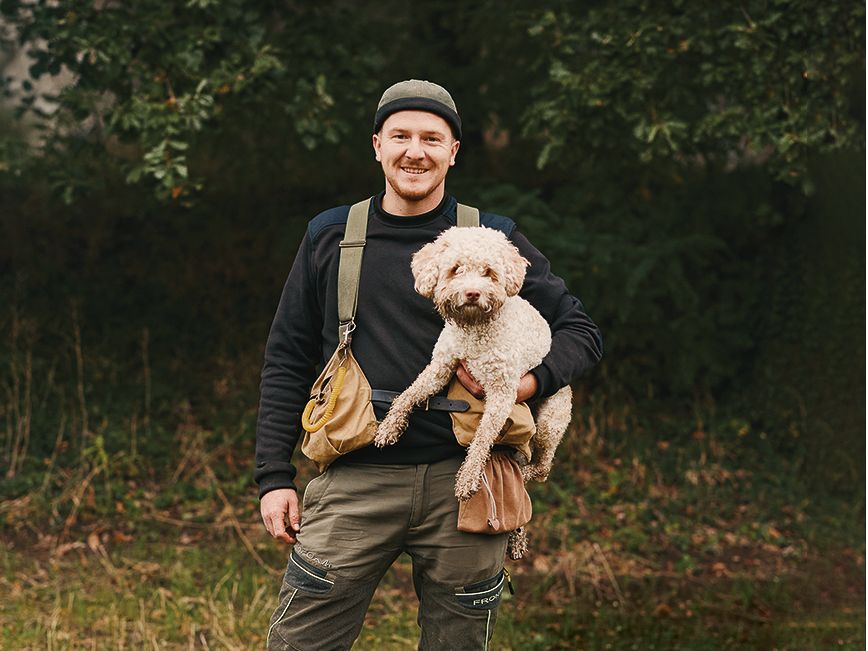It is 4am and I am being led through the sleepy foothills of Berri, a small town in the Italian region of Piedmont, by Daniele, a licensed truffle hunter, and his petite white hound, Bianca. The stars glitter in the cold, crisp air. These chilly nights are part of a delicate ecosystem in Piedmont and are, along with the bright, hot days, what makes white truffle hunting so spectacular in this region. We walk through increasingly dense poplar and hazelnut trees towards a small ravine. As my American guide, Amanda, translates, Daniele explains that timing is everything. He will often return to the same location twice, even three times, a day, because a truffle can mature in just a few hours. Typical of many wild plants, truffles tend to repopulate in the same area, assuming that the truffle’s mycelium – the invisible rootlike network that spreads underground – is not disturbed. Being a good hunter is about memory, he says.

Daniele and his truffle hunting dog, Bianca
Daniel Seung Lee
Daniele’s slow, learned approach and careful hand are hallmarks of an older way of doing things. In an age in which the word fast commonly modifies fashion and food, it is more important than ever to preserve these time-honoured approaches. I am travelling across northern Italy with Prior, an experiential travel company whose itineraries are designed to tell stories about the craftspeople who keep local heritage alive. “We want to spotlight these living cultures passed down by generations and their stewards,” says David Prior, the company’s co-founder. As he accompanies me from Genoa to Venice, he introduces me to artisans that specialise in various foods and crafts along the way. Prior has named this trip Fatto a Mano, or “handmade”. As with many of the company’s itineraries, it seeks to connect travellers to a place’s makers. In Italy that means winemakers, designers, bronze workers and more. “Music, food, design,” he says. “They are the essence of culture, which makes them the essence of the place.” Introducing travellers to these increasingly endangered traditions helps raise awareness about the need to protect them.
Suddenly, our conversation stops. Daniele runs towards Bianca, who is frantically digging under a tree and chewing wildly at its roots. She has been trained not to eat the truffle, no matter how delicious, but the nearer she gets to one, the more feverish she becomes. Daniele leans closer, tugs Bianca away, and begins to dig with a small pickaxe. He stops and looks up at me, instructing me to lean down, to touch and smell the soil. Immediately, I register the scent of the truffle: nutty, earthy and intoxicating. Daniele digs patiently but with a heightened anticipation. Neither of us has to say it. What we want is to find a massive truffle, the kind that looks like a strange tumour sprung from the earth. But no. “Piccolissimo,” Daniele says, his voice tinged with disappointment. It is so small that he feeds it to Bianca as a treat – not even worth selling on the market.


Dining and Cooking